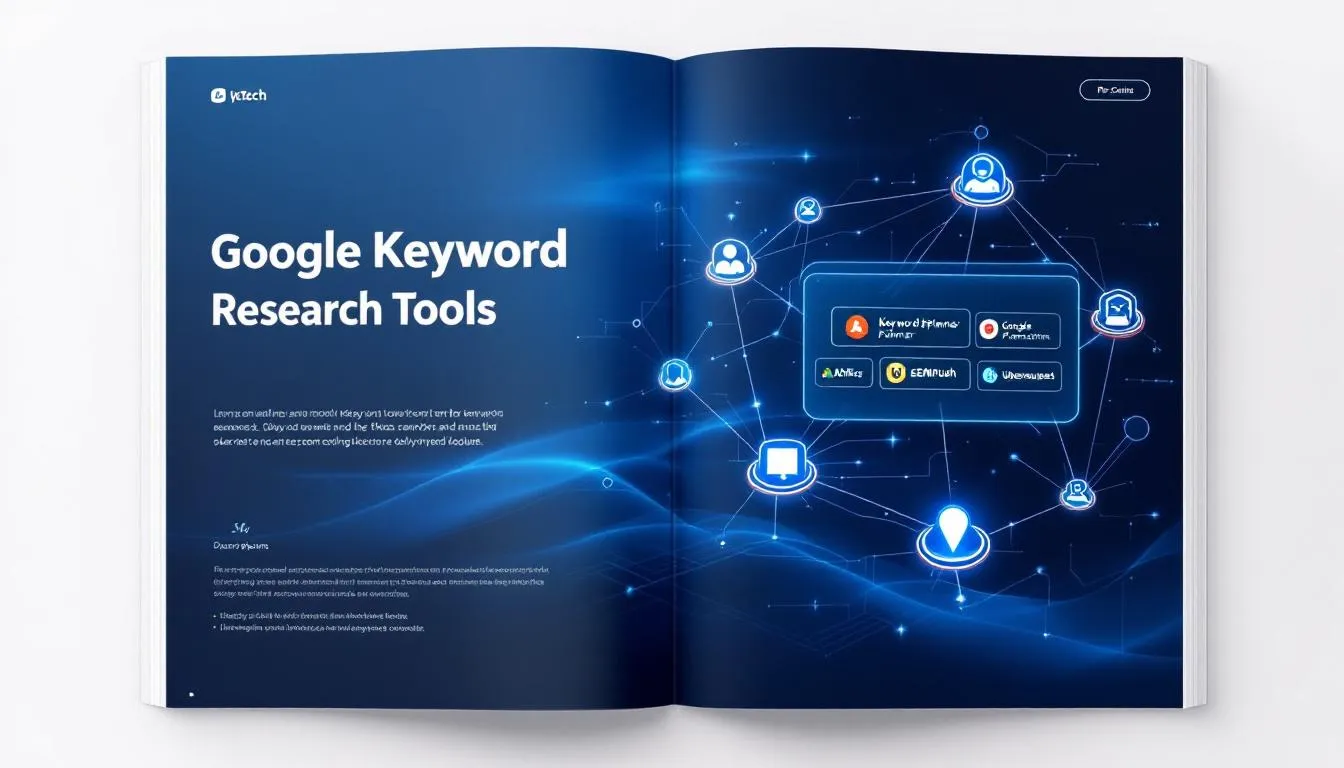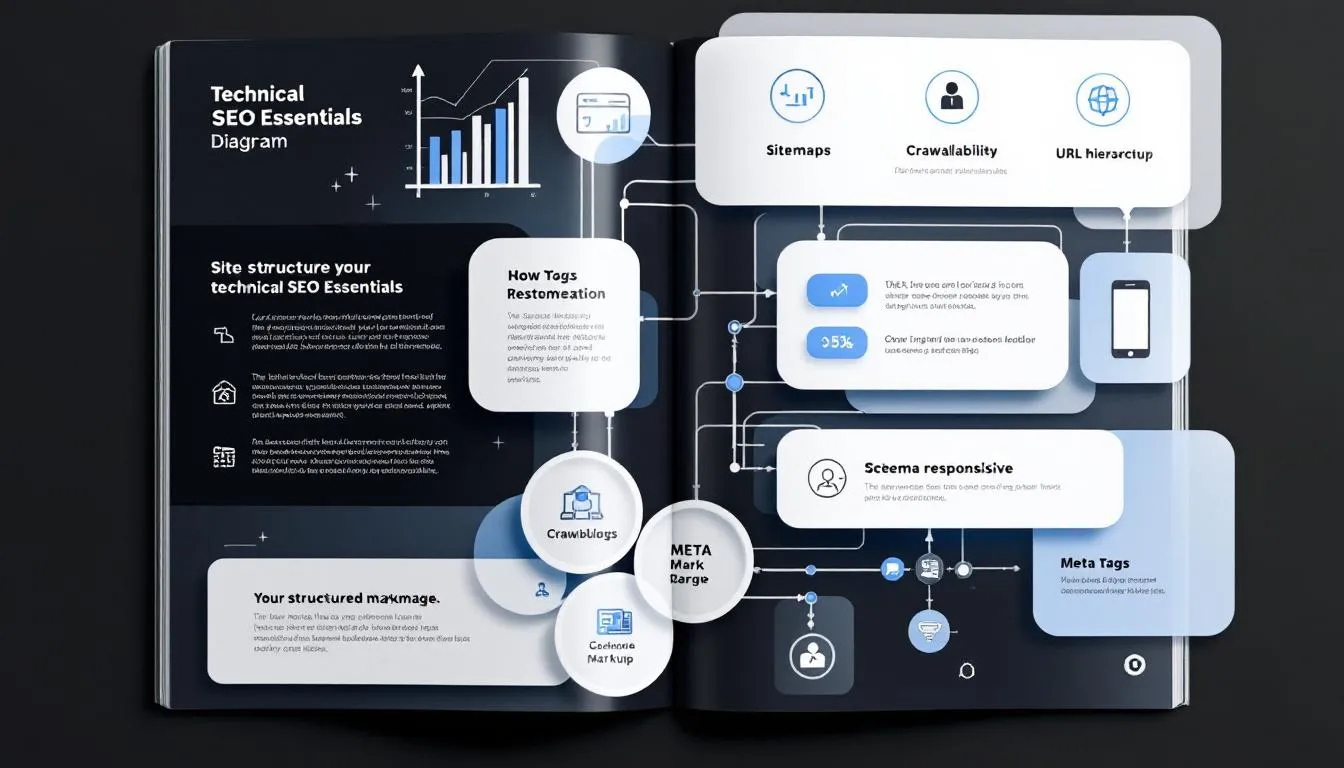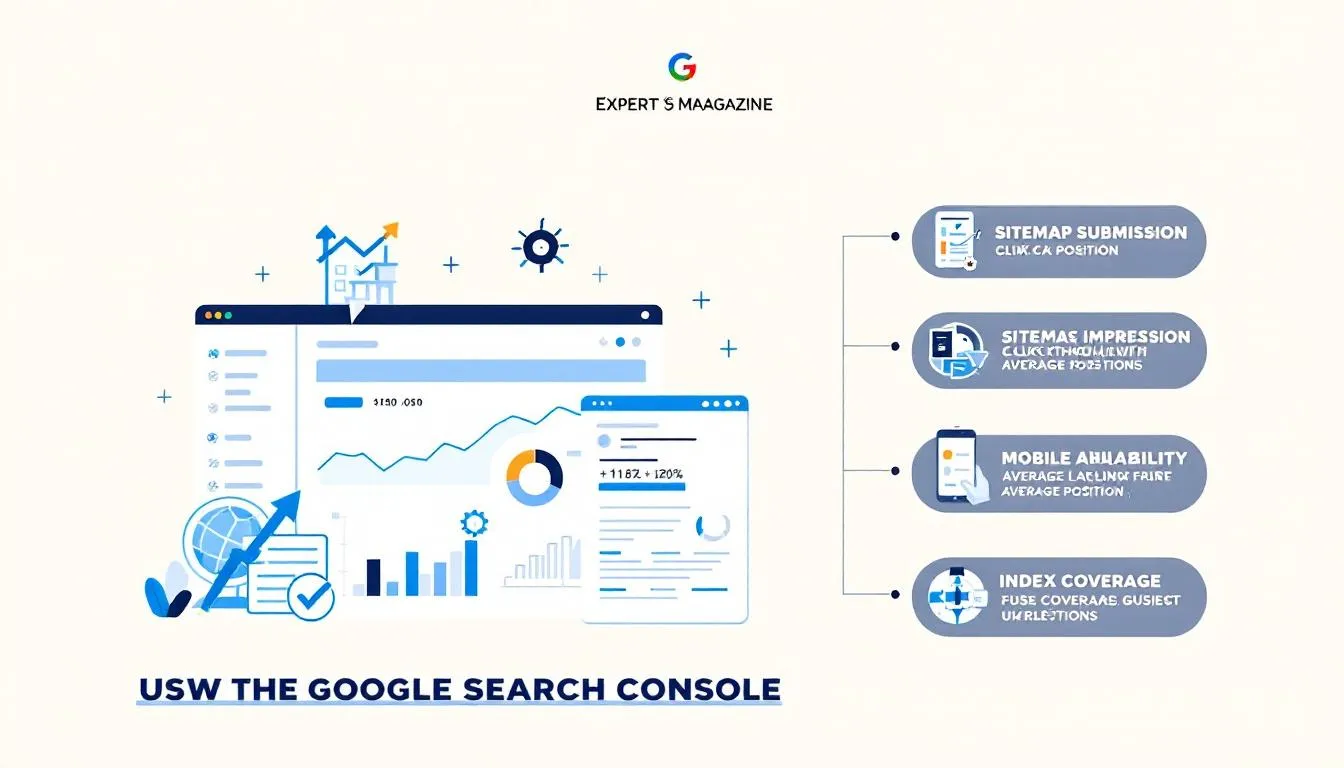Key Takeaways
- Understanding Google’s SEO framework involves the stages of crawling, indexing, and serving results, crucial for optimizing content for search visibility.
- Keyword research is essential for effective SEO, necessitating the use of tools to analyze search volume and competition, which guides content creation.
- On-page optimization, including effective title tags, meta descriptions, and header tags, plays a vital role in enhancing visibility and user engagement on web pages.
Understanding Google Search

Mastering search engine optimization seo begins with understanding the basics of how Google Search operates. Google Search functions through three primary stages:
- Crawling: Googlebot, Google’s automated software, discovers and downloads content from your web pages. This is the foundation upon which SEO is built, as it allows Google to find your content. Refer to the Google SEO starter guide for more insights.
- Indexing
- Serving results
Once your content is crawled, it moves to the indexing phase. During this stage, Google analyzes the content and stores the information in its vast database. Ensure your content is high quality and includes proper metadata, as these factors determine successful indexing. However, not all crawled pages are guaranteed to be indexed, as Google prioritizes content quality.
The final stage is serving results. Here, Google selects the pages it deems most relevant to the user’s queries and presents them in google search results. Several factors influence this relevancy, including the user’s location and the context of the search. This is where your SEO efforts come into play, as optimized content is more likely to appear higher in search engine rankings.
Grasping these stages—crawling, indexing, and serving results—is fundamental to effective SEO. These components form the backbone of search engine optimization, helping search engines like Google discover, index, and rank your content. Optimizing your webpages for these stages enhances your chances of being discovered by users searching for relevant keywords.
The Importance of Keyword Research

Keyword research is the cornerstone of search engine optimization and the first step in gaining search engine rankings. Keywords shape your content around search queries, optimizing it for improved rankings. Without proper keyword research, your SEO efforts may miss the mark, failing to attract the right audience or achieve desired results.
Effective keyword research includes a mix of broad and long-tail keywords to capture varied search intents. This ensures that your content appeals to a wider audience and addresses multiple aspects of user queries. Researching keywords while focusing on the right target keyword and understanding search volume and competition helps create content that ranks higher in search results.
Tools for Keyword Research
Various tools can streamline the keyword research process. Ahrefs and SEMrush are highly recommended for their comprehensive data and user-friendly interfaces. Google Keyword Planner is particularly useful for those new to SEO. These tools provide crucial data such as search volume, competition, and cost-per-click (CPC).
Tools like Ubersuggest and keywordtool.io also aid in keyword discovery. These tools make practicing SEO easier by offering insights into search trends and helping you identify competitive keywords to target. Utilizing these tools ensures your keyword research is thorough and effective, laying a strong foundation for your SEO strategy.
Analyzing Search Volume and Competition
Analyzing search volume and competition is crucial for prioritizing keywords that can drive traffic to your website. Valuable keywords should be evaluated by factors such as CPC, number of clicks, and current page rankings. Higher CPC often indicates that the keyword is closer to the buying funnel, making it more valuable.
To filter keywords effectively, consider metrics like Keyword Difficulty (KD) and search volume. Aim for keywords with a search volume of more than 1,000 and a KD of less than 30 for better chances of ranking. Long-tail keywords, typically less competitive and more specific, can lead to higher conversion rates and a better chance of ranking #1 in search results, which is an important ranking factor to help you rank higher.
Additionally, LSI keywords—synonyms and related keywords—enhance the relevance of your content. Tools like LSIgraph or Surfer SEO can help identify LSI keywords for better content targeting. Thoroughly analyzing these factors helps in selecting the most effective keywords for optimizing your content.
On-Page Optimization Techniques
On-page SEO focuses on optimizing individual web pages to enhance visibility and drive organic traffic. This involves various elements within the page itself, including content, URL structure, and metadata. Target keywords should be included in the content, first page URL, and used effectively to guide content creation for better SEO results. Additionally, tailoring content to match the audience’s reading level can improve engagement and comprehension, especially when considering relevant SEO terms.
Effective techniques include crafting title tags, writing compelling meta descriptions, and properly using header tags. These elements not only improve your search engine rankings but also enhance user experience, making your content more accessible and engaging.
Crafting Effective Title Tags
Unique and clear title tags attract user clicks and improve search visibility. Unique and descriptive title tags help differentiate your content from others, making it more likely to be clicked by users in search results. From a Google SEO perspective, the title tag is the prime spot for your keyword. It should be prioritized for effective optimization.
Consider keeping title tags under 60 characters to ensure they display properly in search results, while still being clear and descriptive. Crafting effective title tags enhances your chances of higher rankings and attracting more organic traffic.
Writing Compelling Meta Descriptions
Meta descriptions help users decide whether to click a search result. Improve your meta description by brainstorming variations, including an example of keywords, and adding a call to action.
This not only attracts clicks but also improves your click-through rates, enhancing overall SEO performance.
Using Header Tags Properly
Effectively using header tags helps structure content, making it readable for users and understandable for search engines. Proper header tag use enhances readability and boosts SEO value, improving search engine rankings.
Creating High-Quality Content

High-quality content that appeals to readers and search engines is central to effective SEO. Key aspects include:
- Understanding user intent behind keywords.
- Offering original insights or thorough descriptions, not just rehashing existing information.
- Evaluating content based on its helpfulness and reliability to enhance quality.
Common attributes of compelling and useful content include being interesting and useful. By focusing on these attributes, you can create content that not only ranks higher but also engages and retains your audience, creating content that resonates with your audience.
Incorporating Keywords Naturally
Integrate primary keywords into your content without overdoing it. This integration of a single keyword and structured data should be balanced to maintain content quality.
Besides the title tag, key phrases should also appear in the headings and throughout the text. This natural incorporation ensures your content remains engaging while optimized for search engines.
Enhancing User Experience
Key strategies to improve user satisfaction and SEO performance include:
- Fast-loading pages, which greatly enhance user satisfaction and search engine rankings.
- Implementing responsive design to ensure a positive experience across different devices.
- Using responsive images to enhance both user experience and SEO performance.
Metrics like pages per session are crucial for determining the effectiveness of SEO strategies. Click-through rates and user engagement are key performance indicators for assessing SEO success. By focusing on these aspects, you can create an optimized and user-friendly website.
Technical SEO Essentials

Technical SEO ensures search engines can access, crawl, and index a website efficiently. A hierarchical site structure helps search engines and users understand page relationships, improving indexing. Google Search Console identifies crawl errors and indexing issues affecting website performance.
Ongoing technical SEO maintenance ensures search engines can efficiently crawl and index your content.
Optimizing URL Structure
A URL acts as an address indicating the location of a webpage. Key points about URLs include:
- Descriptive URLs improve user experience by providing context about a page’s content.
- Hyphens should be used to separate words in a URL for clarity.
- A canonical URL is the preferred URL for content, preventing duplicate content issues.
Implementing XML Sitemaps
An XML sitemap aids search engines in discovering and indexing important URLs on a website, including sitemap extensions. SEOs recommend SEOPress for creating XML sitemaps.
Newcomers to XML sitemaps may need developer assistance.
Managing Duplicate Content
Duplicate content refers to content that appears under multiple URLs. Having duplicate content can lead to wasted crawling resources and a confusing user experience.
Canonical URLs help search engines understand which version of duplicate content is preferred.
Off-Page SEO Strategies
Off-page SEO involves activities outside of a website to enhance its search engine rankings. It’s as vital as on-page optimization because it enhances a site’s perceived authority.
Methods to enhance the visibility and reach of your content include:
- Email marketing, which effectively distributes your latest blog content directly to subscribers.
- Engaging with social media platforms to reach larger audiences.
- Collaborating with industry influencers to expand reach and enhance credibility through digital marketing.
Building Quality Backlinks
Link building involves acquiring links from other websites and other sites pointing to yours, crucial for SEO. Google considers links from other websites as votes of confidence, highlighting their importance for ranking. High-quality backlinks should come from authoritative and relevant sites to maximize their impact, linking them effectively, including external links that are linked to your content.
Google values quality over quantity in links, so focus on reputable sources. White hat link-building techniques include guest posting and blogger outreach. A diverse set of websites for backlinks helps establish a robust link profile.
Content marketing should be integral to your off-site optimization strategy to attract backlinks. Be cautious with links from user-generated content by applying nofollow annotations to avoid penalties. Ensure external resources you link to are trustworthy, as it affects your site’s authority.
Leveraging Social Media for SEO
Social media promotion can significantly enhance your content’s visibility and authority. Shareable content increases social shares, signaling relevance to search engines.
Social media platforms offer significant opportunities to enhance SEO strategies by increasing content visibility. Social media signals, like shares and engagement, positively influence search engine rankings by showing relevance and popularity.
Optimizing Images and Videos
Optimizing images helps users and search engines find and understand them. Images are crucial in SEO by increasing engagement rates and helping Google understand webpage content.
Use sharp and clear images to enhance user experience and improve SEO. Images can be a primary way people discover your website for the first time, driving traffic.
Adding Descriptive Alt Text
Descriptive alt text helps search engines understand an image’s relevance. Optimize images for SEO by using keyword-rich filenames and alt attribute image alt text.
Use hyphens to separate words in filenames for improved SEO.
Video SEO Best Practices
Optimizing videos for search engines is essential for increasing visibility in search results. This includes using relevant keywords in the title, description, and tags, providing transcripts, and ensuring fast load times.
These practices enhance video discoverability and improve overall SEO efforts.
Monitoring and Measuring SEO Performance

Tracking SEO performance measures the success of your strategies and informs necessary adjustments. For instance, Reynolds Building Solutions saw over a 40 percent increase in year-over-year organic traffic and more than a 70 percent increase in contact form submissions by effectively monitoring their SEO efforts.
Elements like the title link and snippet significantly influence user decisions to click through to a site. Optimizing these elements, like crafting enticing meta descriptions and using effective anchor text, improves click-through rates by capturing users’ attention.
Using Google Search Console
Google Search Console is indispensable for SEO. It tells google users to connect their site, manage the robots.txt file, and submit their XML sitemap. This google guide tool provides performance insights, helps identify errors, and explains Google’s indexing of pages.
The URL Inspection Tool checks how Google views a webpage, ensuring everything is in order for optimal indexing.
Key Metrics to Track
Tracking organic traffic indicates the effectiveness of SEO strategies and the overall health of a website’s search performance. Monitor key metrics like:
- Search engine rankings
- Target keyword performance
- Click-through rates
- User engagement.
These metrics provide a comprehensive view of your SEO efforts’ success and highlight areas needing improvement.
Promoting Your Website
Effective promotion is crucial for a successful SEO strategy. Key elements include:
- Link building, because without backlinks, a site is unlikely to rank well.
- Word-of-mouth referrals, which are highly effective for site promotion.
- Promoting content through outreach and social media to effectively improve SEO.
- Consistent brand messaging across all content to build trust and credibility with your audience.
Planning a content marketing strategy helps understand your goals and target audience. Creating a business blog post establishes authority, generates leads, and promotes customer engagement.
Incorporating video content enhances engagement and effectively conveys complex information. Licensing content from reputable sources fills content gaps and adds credibility to your website. Effective promotion of your website content leads to faster discovery by interested users and search engines.
Common SEO Mistakes to Avoid
SEO mistakes can significantly affect your website’s visibility and rankings; thus, it’s crucial to learn and avoid them. Common SEO mistakes include:
- Neglecting keyword research, which can lead to targeting the wrong audience and result in poor traffic and engagement.
- Failing to analyze search volume and competition for keywords, potentially causing ineffective content that doesn’t perform well in SERPs.
- Ignoring on-page optimization techniques such as crafting effective title tags and meta descriptions, which could harm your click-through rates.
Not optimizing URL structures can confuse search engines and diminish user experience, adversely affecting your SEO performance. Creating low-quality or irrelevant content that does not meet user intent is a grave mistake that can diminish your website’s authority due to broken links.
Technical SEO errors like improperly implemented XML sitemaps can hinder search engines from indexing your site effectively.
Summary
In conclusion, mastering SEO in 2025 requires a comprehensive approach that includes understanding Google Search, conducting thorough keyword research, optimizing on-page elements, creating high-quality content, and maintaining technical SEO. Off-page strategies, such as building quality backlinks and leveraging social media, are equally important. By monitoring performance and avoiding common mistakes, you can ensure your website ranks higher and attracts the right audience. Keep these strategies in mind, and you’ll be well on your way to SEO success.
Frequently Asked Questions
What are the main stages of Google Search?
The main stages of Google Search are crawling, indexing, and serving results. These processes ensure that users receive relevant and organized information efficiently.
Why is keyword research important for SEO?
Keyword research is crucial for SEO as it helps tailor your content to specific search queries, leading to improved rankings and visibility in search engine results.
What tools can I use for keyword research?
For effective keyword research, consider using tools like Ahrefs, SEMrush, and Google Keyword Planner, as they offer insights on search volume and competition. These resources can significantly enhance your SEO strategy.
How can I optimize my title tags?
To optimize your title tags, include your primary keyword, keep it under 60 characters, and ensure it is both unique and descriptive. This approach enhances search visibility and attracts clicks.
What is the role of backlinks in SEO?
Backlinks serve as endorsements from other websites, boosting your site’s authority and enhancing its search engine rankings. Their importance in SEO cannot be overstated.
#GoogleSEO #SEO2025 #SearchEngineOptimization #KeywordResearch #OnPageSEO #TechnicalSEO #Backlinks #ContentMarketing #DigitalMarketing #WebsiteOptimization #GoogleRankings #SEOtips #LinkBuilding #SEOStrategy #WebsiteTraffic
